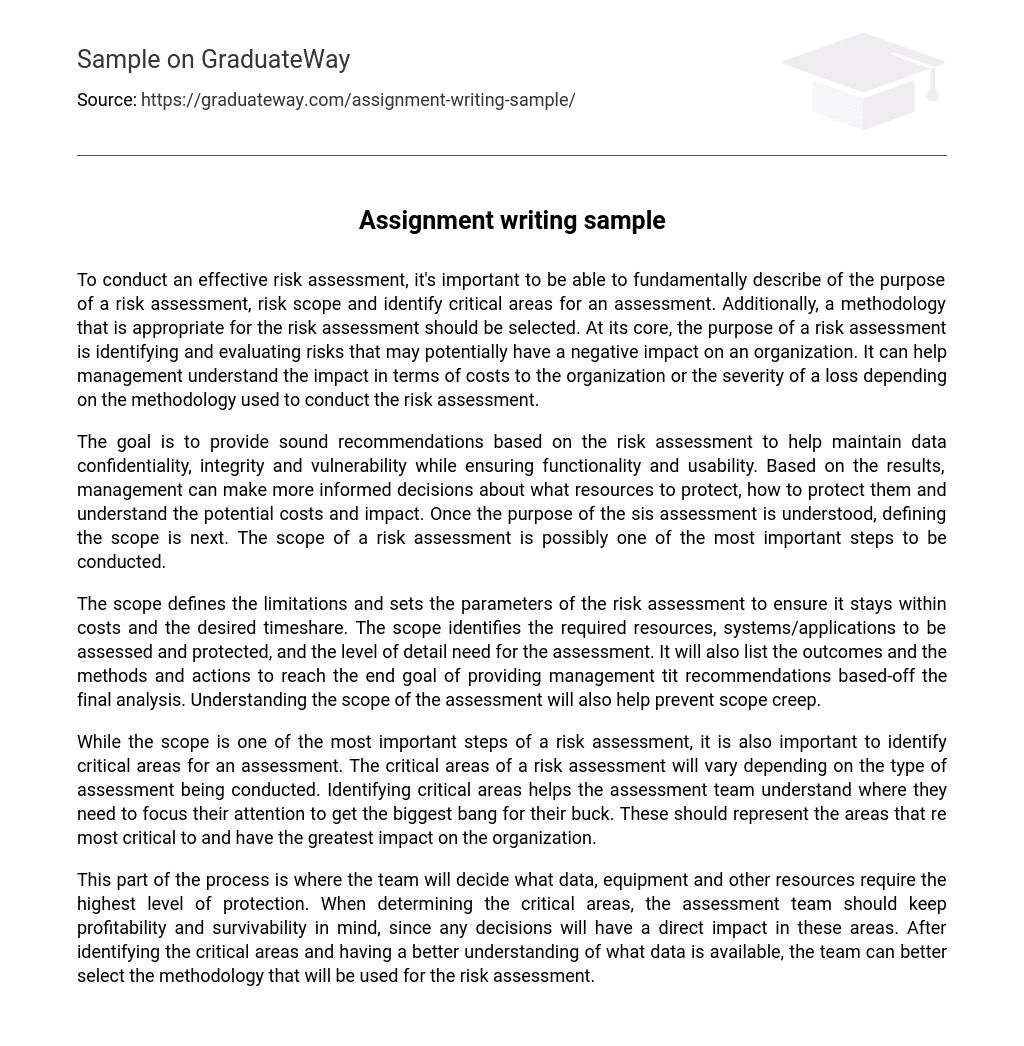In order to effectively conduct a risk assessment, one must have a fundamental comprehension of the purpose, scope, and critical areas for assessment. Additionally, it is important to choose the appropriate methodology. Essentially, a risk assessment seeks to identify and evaluate potential risks that can negatively impact an organization. Depending on the chosen methodology, it can help management understand the financial implications or severity of losses.
The aim is to offer solid advice by evaluating the level of risk, in order to safeguard data confidentiality, integrity, and vulnerability, while also ensuring functionality and usability. By analyzing the findings, managers can gain better insights into which resources should be safeguarded, how they should be protected, and comprehend the potential expenses and consequences. After understanding the objective of the sis assessment, the next step is to define its extent. The scope of a risk assessment is conceivably one of the crucial stages to undertake.
The scope of the risk assessment sets boundaries and parameters to ensure it stays within budget and timeline. It involves identifying resources, systems, and applications to assess and protect, as well as specifying the level of detail needed. It also outlines expected results, methods, and actions for management recommendations based on analysis. Understanding the assessment scope is important to prevent scope creep.
Identifying specific critical areas relevant to the assessment type is crucial during a risk assessment. This allows the assessment team to prioritize their efforts and concentrate on the areas that will have the most significant impact on the organization.
The assessment team will identify the data, equipment, and other resources that need the highest level of protection. Profitability and survivability must be considered when deciding critical areas as these choices affect them directly. After identifying critical areas and gaining a better understanding of available data, the team can choose a risk assessment methodology.





